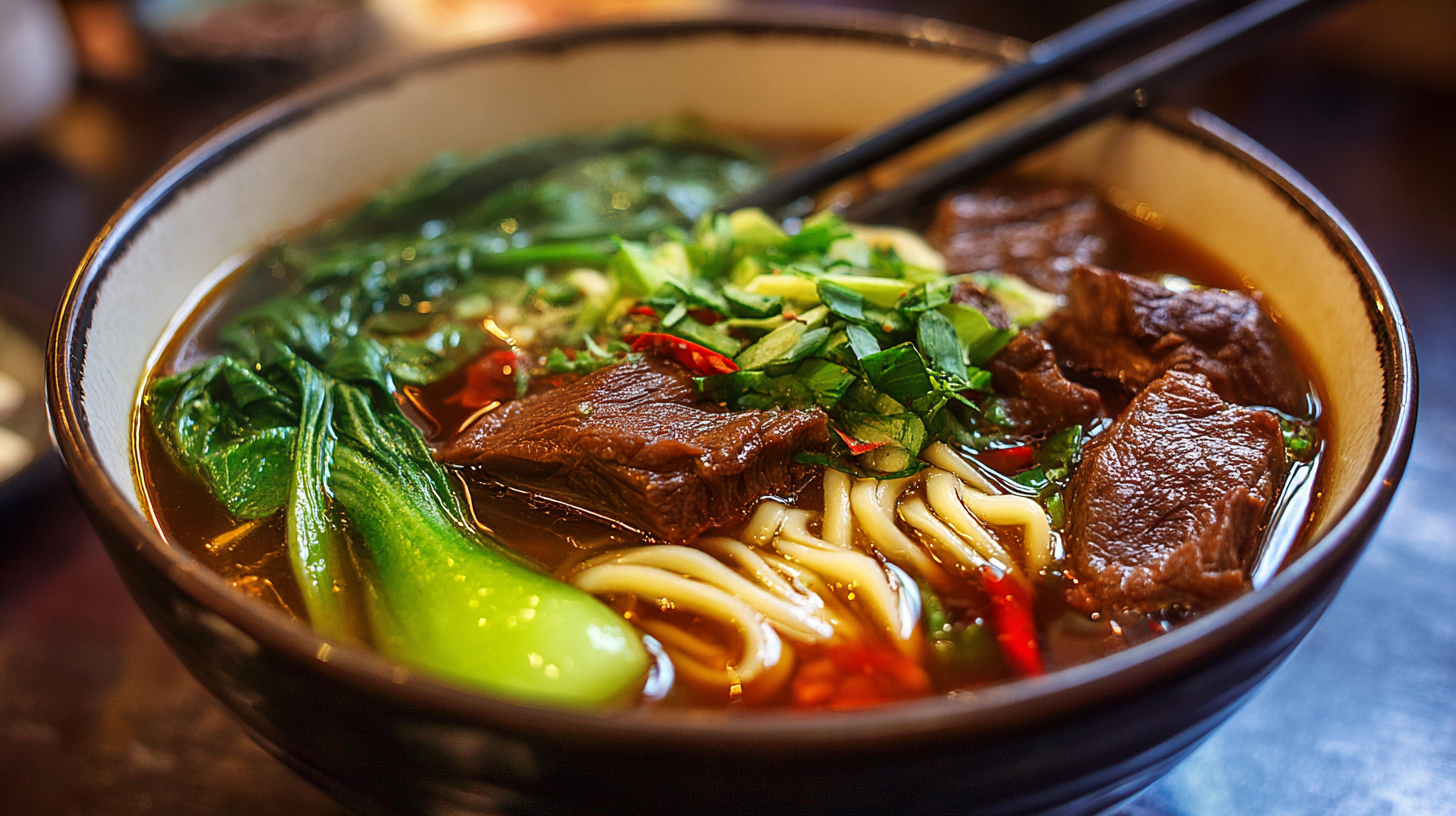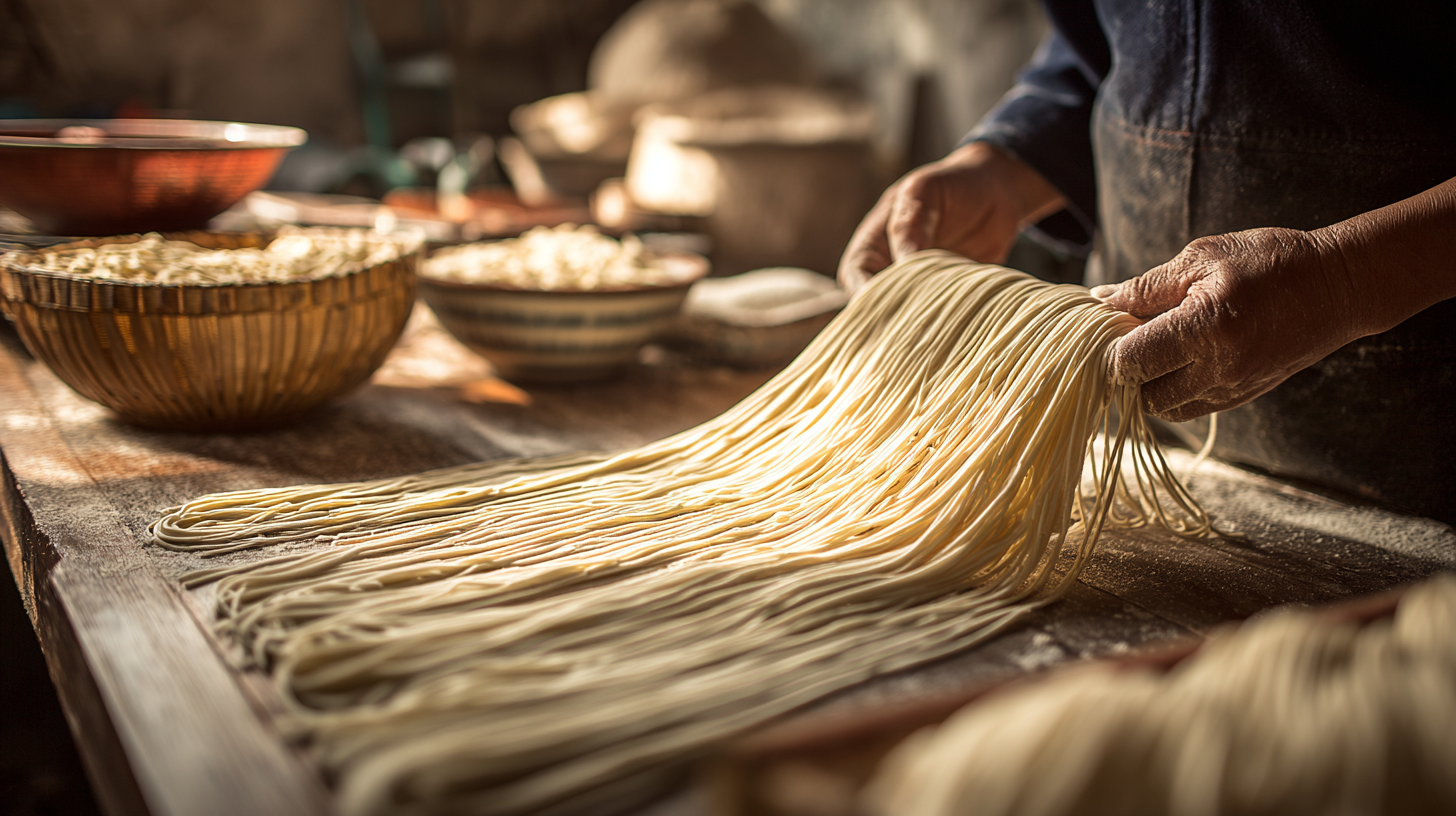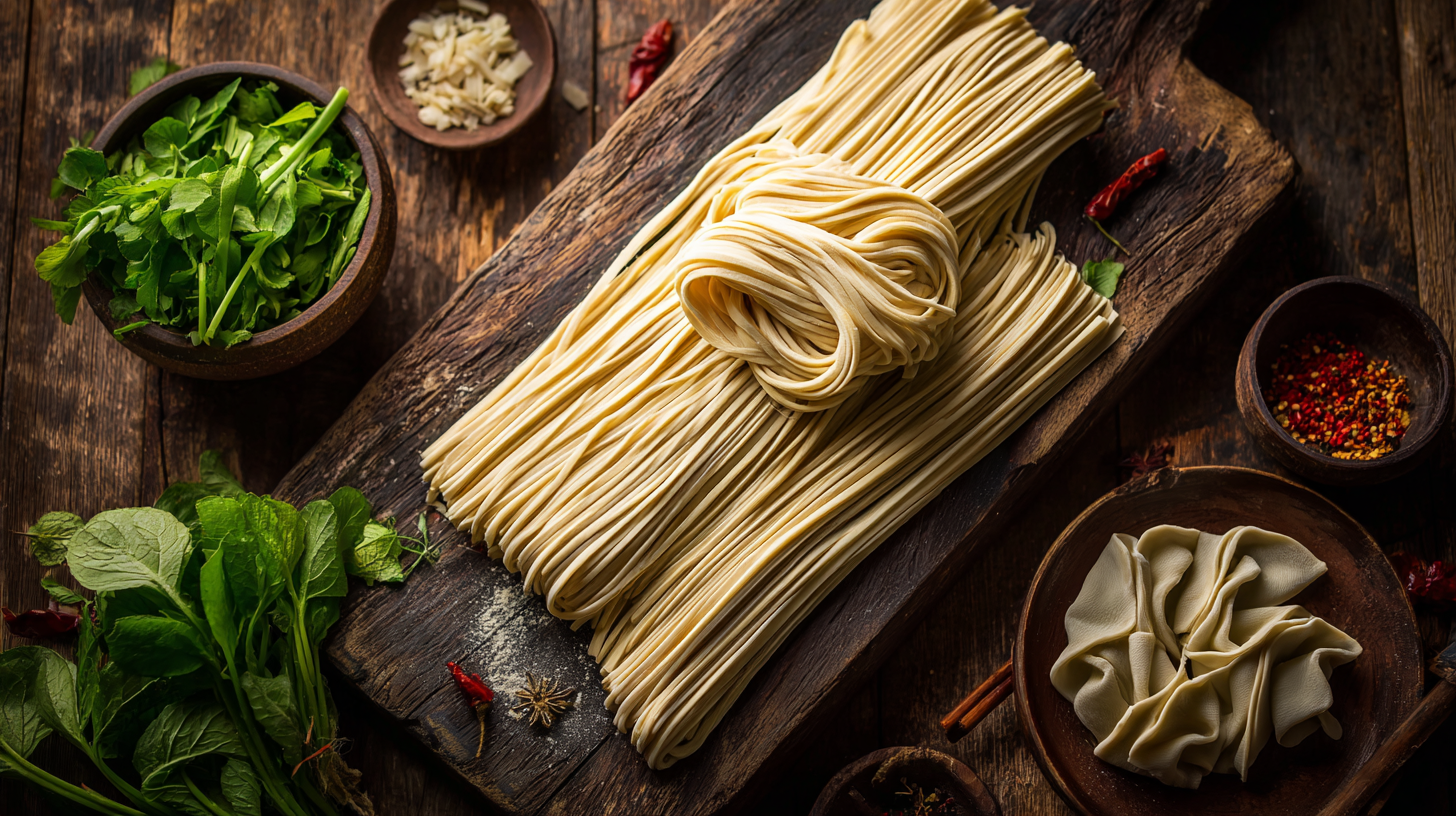
In the heart of China’s rich culinary landscape, "Hand Pulled Noodles" stand out as a testament to both tradition and skill. Known for their unique texture and flavor, these noodles are crafted through an intricate process that transforms simple dough into elastic strands that can elevate any dish. This ultimate guide aims to immerse you in the world of hand pulled noodles, showcasing the expertise of leading manufacturers who have perfected this age-old craft. From the history behind this beloved staple to the various techniques employed by seasoned chefs, we will explore the nuances of hand pulled noodles that make them a must-try for food enthusiasts. Join us on this journey to discover the artistry and passion that define premium hand pulled noodles, and learn why they are celebrated not just in China, but around the globe.

The art of hand-pulled noodles is a captivating culinary tradition that embodies the rich heritage of Chinese cuisine. Originating from the northern regions of China, these noodles are crafted by skilled artisans who expertly stretch and fold dough until it transforms into long, silky strands. This time-honored technique not only showcases the dexterity of the chef but also enhances the flavor and texture of the noodles, making them a beloved choice for many.
Recently, this beloved dish has gained international fame, captivating food enthusiasts across the globe. A showcase in Beverly Hills highlighted the impressive skills involved in hand-pulling noodles, illustrating how this culinary craft can charm even the most discerning palates. As restaurants across the world introduce hand-pulled noodles to their menus, they are bringing a piece of Chinese culture to a broader audience, allowing diners to appreciate the intricate process behind each delectable bowl.
Hand-pulled noodles represent more than just a meal; they symbolize passion, tradition, and the art of culinary excellence from China.
The art of crafting premium hand-pulled noodles is a time-honored tradition in China, striving to achieve the perfect balance of texture and flavor. In the heart of leading factories, craftsmen utilize their hands and heritage to transform simple ingredients into culinary masterpieces. Every noodle is pulled with precision, creating long, elastic strands that are ideal for soups, stir-fries, and more. It is a process that involves skill, patience, and an intimate understanding of dough elasticity.
**Tip**: When selecting hand-pulled noodles, look for a subtle sheen and consistent thickness, as these qualities indicate expert craftsmanship. A slight chewiness is also a sign of high-quality noodles that will hold up beautifully in various dishes.
Behind the scenes, the factories employ traditional techniques while also integrating modern technology to enhance efficiency without sacrificing authenticity. Workers often undergo extensive training to master the pull, ensuring that each batch remains true to regional styles and flavors. The vibrant atmosphere of these factories is a blend of tradition and innovation, creating an exciting backdrop for exploring China’s rich noodle culture.
**Tip**: To bring the authentic taste of hand-pulled noodles to your home, consider pairing them with rich, flavorful broths and fresh local produce to elevate your dish.
| Noodle Type | Average Thickness (mm) | Texture Characteristics | Cooking Time (minutes) | Serving Suggestions |
|---|---|---|---|---|
| Wide Noodles | 3-5 | Chewy and firm | 6-8 | Stir-fry, soup dishes |
| Thin Noodles | 1-2 | Silky and soft | 3-5 | Cold dishes, soups |
| Ramen Noodles | 2-3 | Firm with a slight bounce | 5-7 | Ramen soup, stir-fries |
| Udon Noodles | 5-7 | Thick and chewy | 8-10 | Soups, stir-fries, salads |
| Egg Noodles | 2-4 | Rich flavor, soft | 5-7 | Stir-fry, soups |
In the world of hand-pulled noodles, quality is paramount. Leading manufacturing experts in China have honed their craft to ensure that each strand of noodle meets the highest standards. Recent reports indicate that the demand for authentic hand-pulled noodles has surged, with market growth projected to reach X% annually. This spike in interest highlights the significance of rigorous quality assurance processes in noodle production. Experts employ strict inspection protocols, including moisture content testing and texture analysis, to maintain consistency and superior quality.
To ensure you enjoy the best hand-pulled noodles, consider these tips: first, seek out establishments that prioritize traditional methods and source high-quality flour, as this greatly impacts the final product’s texture and flavor. Secondly, check for transparency in their sourcing practices; reputable noodle makers often share details about their production methods and ingredients. Lastly, pay attention to the serving style; authentic hand-pulled noodles are typically served fresh, allowing their unique flavors to shine through.
With noodle specialists facing closures in various regions, including notable establishments in the Bay Area, it becomes essential for consumers to support expert producers who maintain quality. Adopting these tips can lead to a more satisfying and authentic dining experience, ensuring that you savor the true essence of hand-pulled noodles.

The global appeal of Chinese cuisine continues to flourish, especially in the realm of noodles. From hand-pulled delicacies to the intricate craftsmanship involved in their preparation, the artistry of Chinese noodle making has reached an international audience. As more restaurants and brands emerge worldwide, the rich traditions of Chinese noodle craftsmanship are not just preserving history but also evolving culinary experiences for global consumers.
One fascinating development is the success of several noodle brands that have taken the international stage by storm. As traditional techniques meet modern tastes, Chinese noodles are no longer confined to local confines; instead, they are becoming a staple in the culinary landscapes of various countries. This growth is emblematic of how craftsmanship transcends borders, bringing unique flavors and textures to diverse palates. From Paris to the open seas, the essence of Chinese noodle-making is being celebrated and embraced on a global scale, fostering a deeper appreciation for this age-old tradition.
This chart represents the estimated market size (in million USD) and growth rate of premium hand-pulled noodles from China over a five-year period.
In the world of Chinese cuisine, hand-pulled noodles stand out not only for their texture and flavor but also for the craftsmanship involved in their production. A blend of traditional techniques and modern manufacturing methods has significantly reshaped the noodle-making landscape. Recent industry reports from the Noodle Association of China indicate that the hand-pulled noodle market has grown by 12% annually over the past three years, highlighting a reinvigoration of interest in these artisanal products.
 Modern innovations in noodle production now include the integration of automated processes while maintaining the authenticity of hand-pulling techniques. For instance, advanced machinery can assist in flour selection and dough preparation, ensuring consistency in quality and texture. According to the Food and Agriculture Organization, implementing modern technologies has resulted in reduced production times by up to 30%, allowing artisans to focus on the intricate hand-pulling process that defines these noodles. By melding time-honored practices with contemporary advances, manufacturers can create high-quality hand-pulled noodles that appeal to both traditionalists and new consumers alike.
Modern innovations in noodle production now include the integration of automated processes while maintaining the authenticity of hand-pulling techniques. For instance, advanced machinery can assist in flour selection and dough preparation, ensuring consistency in quality and texture. According to the Food and Agriculture Organization, implementing modern technologies has resulted in reduced production times by up to 30%, allowing artisans to focus on the intricate hand-pulling process that defines these noodles. By melding time-honored practices with contemporary advances, manufacturers can create high-quality hand-pulled noodles that appeal to both traditionalists and new consumers alike.
